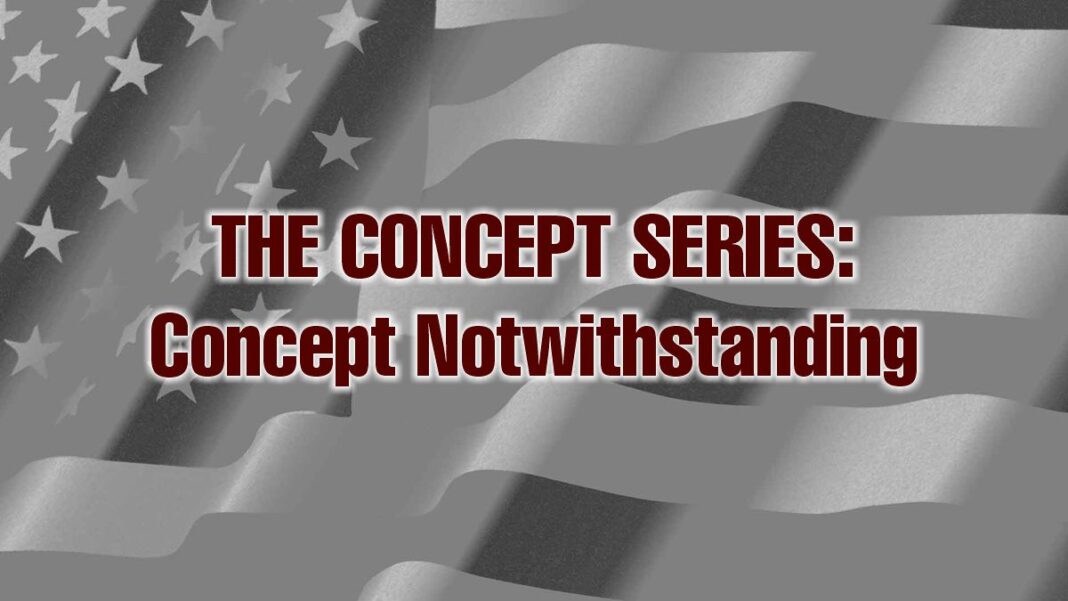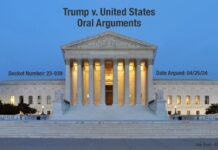Concept Series Preface
The purpose of this series of articles is to establish a cordon of doubt around firmly stated, but subjectively held, principles of truth and democratic belief, albeit used to govern our politics and personal beliefs. What are they who are freer today “to be themselves” free to become? Why are they who are pre-tensed in life spoiling upon the human mindset? Not even the human aspect is knowable, as we fawn upon a vacant incubation, and afterward feign a hatched reality.
Seasonal Sense
Spring – study whilst passing through its initial phases … prospects still ahead
Summer – study during its heyday … engrossed in favors and suspected faults
Fall – study whilst moving into decline … problems and odds of transformation
Winter – study during its wane and death throes … reclamation or dissolution
Sensual Loss
(Absolute Conditions)
Many concepts admit the Absolute, irreverently, without ever encompassing its meaning or full measure. Comparatively, this is like saying, “God is”, without explaining the nature of God or actually proving His existence. Perhaps it is better understood from its linguistic complement: the Relative; a term which implies either 1) an antecedent by which a thing has heir to (as in relative pronoun, relative offspring, or relative humidity); or 2) a dependence to which a thing is being compared (as in relative axis, relative quiet, or relatively smart). Contiguously, therefore, this implies that the Absolute must specify a condition of perfection or otherwise a reality without precedence. However, like most cases of (simple) dichotomy, this distinction may not, in practice, be quite so straightforward. There is an ideal and a real interpretation of most outlines of truth — which is a subject long-discussed in my past and left unread for the future. It suffices to point out here only that the Absolute might be 1) unbounded and undefined (as in absolute divinity or absolute value of a number); or 2) maximized or minimized to form (as in absolute zero in temperature or absolute ceiling in horizontal flight). Whereby it may be said, even the word ‘Absolute’ may have its own ideal or real connotation.
Most every system of thinking (mode of belief), whether secular, philosophical, or religious, can be broken down into these scalar sets of foundational principles: the absolute and the relative. A less sophisticated differentiation than above would be based on how they serve the system under description. A relative insinuation about a system would be one that is functional and useful, though not necessarily crucial or essential, within the guidelines of its operations. Thus, a relative observation would be one that is susceptible to doubt or error (discharge). An absolute implication, by contrast, cannot be separated in formal rendering from the structure of the system itself, or even brought into denial, else it would bring about the dissolution of the system.
Take as an example a religious sect whose major elements of creed are: (1) the worship of a real God, who is, (2) in the promotion of a harmonious relationship among human beings. Such a practical faith cannot, once and simultaneously, be called evincing or entrusting if couched within its church membership there is a heartfelt allowance for those who strongly doubt that the Lord exists, or if He does, that He is actually good, hence worth serving. These (affirming) views are inimitable to the religion itself. To stay in good stead with the church, a practitioner may have his doubts from time to time (about God or humanity), but faithful patronage would imply that he be in absolute conformance of its spiritual foundations. Similarly, there are certain moral principles in the church sect known as Society which its members should hold sacred or as sacrament. Ironically, the social prohibition against willfully hurting or killing someone, even someone clearly innocent, would not constitute an absolute principle within the manifest of this philosophical carry — not knowing what crosses the line of harmonious existence socially, or what brings about total rejection in the Overseer’s eyes.
Not all religions have equal standing, nor should they have by indoctrination. A religion may condone or tolerate ‘murder’, in case and point. But such a belief might have been arrived at through faulty standards; i.e., ‘murder’ falsely defined as “disposing of someone”, rather than “the taking of another’s life” and “the theft of what does not belong to you”. When thought about long enough, is not every expression its own canister of truth, its own indicator of good or evil product-delivery system? Some moral topics may be open to argument and controversy. ‘Goodness’ should not be taken exclusively, but we must not be indifferent as to whether ‘goodness’ is preferable to ‘evil’. Upon that conception, we call it “good”. Likewise, truth must be presumed in general to take precedence over falsehood; otherwise, it would not be absolute in its crucial bearing.
Beyond this simple introduction to satisfying conditions, there is the calm innocence and ignorance of children who are not psychologically prepared or capable of discerning the difference between virtues, vices, and vanities, as pertaining to any means of philosophy. First, they must have values ingrained and ingratiated within them, to provide a basis for knowledge of right and wrong, good and bad, before they become able to judge between doctrines. In solemnness, even if they could not fathom or interpret them, they must be taught absolutes. Like the fireside storytellers of ancient social gatherings, they must interject the folktales of the great in order to give the ordinary … truth and vision about the universe … and humans (individuals) an ambitious placement within it. As a family, we all live among the relatives of the Absolute.
Modern society has tried strenuously and viciously to deny the existence of any absolute (God) or any standards of law-abiding absolute behavior. For any meaningful and wholly operational systems of laws and conditions to apply, that would mean there would be no real need for a group of elite leaders to tell the majority what to do. That is exactly what authoritarian professors and teachers, and their union-driven school administrators strive to discount … absolute law-abiding … even as they mightily force their own morality … absolute law-obedience … upon children and the public of whatever age or mental capacity. Varying views of worth and value would mean dissentious adherence to and salute of the communist flag. Instead, at best, they proffer each (authoritative or non-authoritative) opinion as though equally valid, with liberals acting like judges at a county fair where every craft competition and beauty pageant is always a strict toss-up amongst the inartistic and the homely. Having such, each endeavor comes soothingly attached with the elites’ own viable alternative solutions and patterns of acceptable behavior. Variation in belief from this enforced tradition constitutes deviancy of thought from the educational mainstream. Meritorious consideration for them becomes ungrounded to natural honesty and caroms deliberately sardonic: tying sophistication to the mundane, politics to power, incest to marriage, and religious brotherly love to vulgar sodomy. All is equal (except for our share). While, by intention, everyone else is left sparring at the crude and crass level.
As applied to individuals involved in specific circumstances, absolutes exist. But as regards to the transactional system — summoning and associating (a) condition with (b) object with (c) subject — no universal system of moral absolutes can apply, except as occasionally idealized in the broader crystallization of a rule. A theoretical construction fault of any such perfect system, were it to exist, would require that all of its elements be absolute. The human subject (or worldly object) can never be absolute, being born into existence, growing, maturing, aging, and eventually passing out of existence. Given any particular system of participating humans, there are also the inherent problems of individuals/groups at different levels of maturity, strength of apprehension and adjustment, endeavors of entreatment or sensitivity to provocation. Though some will be amenable to reason, many will preach and cling only to passion. The foundation cracks of any institutional attempt at fair democracy may be readily traced back to the quarries of pitted social jealousy. Our founders and the drafters of the original Constitution acknowledged this fallibility by insetting a contingency (provision) for future additional conventions — perhaps in groomed assessment of modified nullifying decisions, overcoming antiquated principles, inducting new rights, such as to affirm the ultimate realm of Constitutional fulfillment to be found in an evolving formation and expression toward the Absolute.
Aside this revelation, history reports that the Old Testament faithful viewed the Almighty God as strict and severe, but also just, as exemplified in the maxim for meting out punishment evil for evil: an eye for an eye, a tooth for a tooth. Over centuries of hardship and cultural evolution, wars and captivity, instruction and enforcement, the followers of the New Testament grasped a new view of the Lord as a loving Father, demanding, but still temperate and fair-minded, even more enjoined with forgiveness and complete grace. Moreover, Christians themselves came to embrace the principle of not repaying evil for evil, of turning the other cheek, prayerfully blessing those who spitefully use and persecute them. Tell me now, if you will, was this religious ‘evolution’ good or bad? In other words, did it serve the purpose of improving humanity, expanding more thinking and enhancing social cooperation, or did it make it worse? If you say, “improve”, then what you are really saying is that there was social enactment of a better ‘way’. To say something “improved” is to give it direction. To give faith direction is to give it true bearing; not merely relative apprehension; but movement toward some compelling drive and absolute endpoint; which is, the encapsulation of the better-off, even the ultimate good.
The debate about having absolutes or not, at least in our personal lives, causes contradictions to form from time to time. We may say we value life, yet are desirous of eating meat – who might be or otherwise could have been our domestic sheep or house pet or animal ‘kin’. Keeping ourselves holy, even vegetarians and animal protectionists may still despise certain plants (cacti and poison ivy), resent certain animals (rats and pigs), or are highly phobic about others (snakes and spiders). Holding all things living as sacred is an ideal … subject to rational-trimming, since most individuals would not hesitate to swat killer bees, tsetse flies, and mosquitoes, nor regret removing and killing ticks, lice, and many other forms of insect beggars. Before anyone can fully grasp the concept of ‘sin’, as in the taking of a life, we need to define ‘life’: human life, mammalian life, reptilian, any entity above a bug, and so forth. But doesn’t the word ‘life’ itself imply some form of spiritual ‘vitality’ and thus nobility, encapsulating a sense of wanted existence (to itself or somebody) and putting us at risk of judgement or reprimand? Many of our observations about life (in general) appear contradictory only because we have not properly defined the terms or because we have improperly interpreted their significance.
Tell us how to become sublime. Tell us what not to kill (and digest). Primarily ‘man’, next to animals with faces, any poisonous plant or dangerous fruit. To be safe, ingest only protein drinks and amino acid injections? Only pills, supplements, and vitamins? Every weekly pill tray of the senior citizen has the regular markings of tabulation for days remaining unto his own nothingness (death). Vice versa, every bit of scrap a person takes in, whether meat, greens, or powdered kelp, requires the dispatch of something which was once alive: a life for a life. Even when you cook, you kill (bacteria). Every time you slap yourself, you bruise or dislodge. Every time you wash your hair or clean your clothes, you purge the symbionts from their lord’s tenancy. Every second your inner body is combatting infections and destroying microscopic creatures. Every time you scratch yourself or sneeze, you dastardly eject hordes of tiny germs. When you walk uncaringly across the ground, you are crushing tiny plants and mosses and miniscule creatures beneath your feet. As long as you reside as a naturally subservient, functioning organism, death will surround and motivate you. Destruction is the cost of living survival. There is no sin in this … no mortal condemnation. There is no sin in killing, except as you act indiscriminately and excessively, without natural purpose; or foolishly proceed to the vanquishing of the ordained.
The heavens declare the glory of God; but little praise is eyed unto an exoneration of that gloriousness in all its dimensions and manifestations. After the human mind has journeyed wide for island comfort, merely to discover a world that is hammock-tied between non-existent trees, a sky fraught with endless tropical heat, scourged only by tempest equivocation; after all of his painful labors are spent, mankind still swears profanely of his lack of bounty harvest, not counting any intermittent crops of disavowal; after that, he falls prostrate to the ground, amidst its final clearing darkness, assured an independent demise of human liberty; it is only then that he is compelled to seek the absolution of truth outside himself, with none freedom made exempt from sin. [Be it under Levitical law or some other religious trial, God pointing inward … should mankind even be allowed to sit down at table.]
Take cognizance, therefore, of why laws exist. Few leverages or bartered points of distinction are earned by set up with the unbounded. We should like to think that most creatures, even they which are meat-eaters, have, unseen and undescribed by us, an innate overriding moral switch inside them preventing them from chomping down on other members of their own pack; or for the sake of parenthood, on their offspring — although some do. Normally, however, most habituate a safety zone as established by emotional bonds; or in overall feelings, work to distillate what may be eaten as food versus what should be weighed in protected trust. Such controls, we presume, come intuitive from birth or are made sanctioned by an environmental harness, keeping most animals at emotional impasse. But when behaviorally stretched, unlike they (the animals), mankind has only his wits and cultural programming to guide him — spellbound sometimes by the internal confusion and the lack of spiritual sacredness. A mistake envelops any belief system that extends the law beyond its presumed (registered) contextual application. What Peter ate was not in kosher violation of God’s law.
Next, aside from all the other reasons, the most moral argument for not keeping ‘pets’ in personal household today is that other animals are usually tried and killed in order to maintain its diet or sustenance (even if from crumbs of over-abundance). On a single night’s round, cats and other pets may kill for food or even sport, and deny legitimate creatures of nature a seat at the midnight paring. When their food or our servings are shunted off to a butcher, slaughterer, or farmstead harvester, this does not relieve the person from his acquiescence and guilt. Perturbingly, for many years, one of our best domesticated companions, the horse, has been cannibalized for another as dogfood (Taylor, 2021).
Hearts Of False Pacifism
(Absolute Non-Violence)
What was always missing from the war protests of the 1960s, the race riots of the 1970s, all the way through to today’s BLM and Antifa stagings, were marchers of conscience being and conscious self-awareness. Housed within their “make love, not war” or “seek justice” themes were the cruel insincerity of attacking police officers, the trampling of their fellow protestors, the pillaging of campuses, city businesses, and entire neighborhoods, the crippling of the activities of first-responders, and the burning of the lives of the poor, the innocent, and the elderly. How do you renounce the Devil on the outside fence without railing against the Evil within? More than little spots appear on their arrest blotters, and protruding teeth have rat-bitten their cheesy mugshots: they who never give posted warning of their outlaw-ism, and grant no amnesty to the surrounding civic-minded. “Take what you want”; “destroy what you can’t steal”. A flaw in the humility welds of their mental furnace have vent-shut their words and vain-fired their characters; so now all must be at temper with the hurt.
Pacifism does not mean you should overlook the villainy of others. No one can be completely against all war and violence; in support of only love and righteousness. In practice, pacifism and righteous living are mutually exclusive, given that real life involves violence, and from the point of view of law enforcement (at least) usually entails tracking, capture, takedown, incarceration, prison commotion, and the quelling of rebellion or escape over long periods of time. A citizen, individually, may have the (haughty) luxury of not resisting a gang of criminal street thugs, but not the police force. A perfidious soul might claim hypocritical pacifist predetermination and protection for his entire class of sheltered elites; while simultaneously clamoring that the ‘book’ be thrown at each offending waif, or that juveniles be treated like adults, and even the rapist be unceremoniously castrated without the use of anesthetics. Anyone not of your elevation is obviously ‘beneath’ you, hence deserves to be treated accordingly (repressively). A real pacifist should be a peacemaker, a humble negotiator, for prized freedom from sin. Jesus had numerous disciples, but no company of pacifists or warriors; and none that would endorse absolute forgiveness or perfect penalty. The picture of scandalous faith takes portraiture from a childhood image of vengeful self.
It has been said that a purely secular society, left to its own espying of nature, its own human devices and hard-won accomplishments, can yet create over time a reasonable, equitable, and creative environment for all. Notwithstanding, the truth is, that any person set in a void of moral ambiguity and without a higher-ordered guidance, will probably revert to bestial grudges and belaboring instincts of misfortune (for all but those who become the elite rulers). Genuine pacifism has its followers of record, I would acknowledge. A king may use it to distinguish between an approaching barbaric oppressor and the civilized oppressed; or even the helpless forced to accept the futility of resisting aggression. Judeo-Christian pacifism assumed special distinction with the coming of an unexpectedly gentle Jesus Christ. Howbeit, His faith resided in greater things that we know: from the Old Testament, a Lord who fights our battles for us; and in lesser things that we don’t know: from the New Testament, with heavenly sympathy and in burdens made light by unmerited salvation.
Curing ourselves, logically, of the urge for believing in non-violence and no vengeance (comeback) against someone who has hurt us immensely is the Christian call for universal (unimpeded) forgiveness. A philosophical stipulation or qualification for swearing faith in any belief is the objective assumption that every person has in deliberation thereof a higher authority upon which to justify or refer back to (someone or something outside himself). We have all heard the stories of those psychotics (for example, school shooters) who mercilessly slaughter innocent children because their minds have ceased to function logically, dwelling in their madness of their own perverse thinking, pontificating on their own righteousness, and creating a manifesto exonerating their own hatred (of whatever). The degrees of authority (outside oneself) that generally form a firewall from non-substantive belief are:
- Family or tribal group
- Communal or socially-relevant culture
- Hierarchal or political structure.
Such attachments usually give us grounding and atmospheres of custom and airy precept. Along with these three are often added “the natural” — not creature-like, but the humanitarian appeal of peoples spawned from similar origins, and assumed moving in the same evolutionary chain of advancement. And finally, many societies also recognize the transcendency of spiritual laws prescribed, if not transcribed, from some ultimate authority (as in, “One nation under God” or “In God we trust”).
Nevertheless, there is nothing essentially character-affirming or necessarily abiding about natural existence, allowing us to ford dissension and grievance, or to afford complete reliance upon pacifist ways. Quite the contrary, Mother Nature seems to approve of killing (or murder), though hardly without some effort expended, and perhaps at the degrading expense of honorable existence. In alignment with certain innate needs and design, all higher-order animals must hunt for food, struggle for defense and survival, and insert themselves into social-sexual (fighting) situations. Accepted, as opposed to human warfare, Nature has her justifications. But going deeper, it could be argued instances and incitements of gross brutality and shameless wantonness are entrenched as part and parcel of natural operations. Take the (annual) wildebeest migration as an illustration. Upon trying to cross rivers, often with high embankments, the herd members, in their tens of thousands, must stumble down the banks, swim across a fast-moving flow, up on the other side with their young calves, which especially have a hard time crossing. Compulsion urges them onward even though thousands will die from drowning, or eagerly devoured alive by crocodiles, or simply stomped over and under by the vast numbers still following. Not that they were all that safe on shore, facing the teeth and claws of lions, hyenas, and other pursuing, salivating predators. The killers have little honor in how or when they kill; and the plains animals have little athletic virtue in surviving while their little ones died, except in witless strategy of species continuation.
Taking the long view, violence (or non-violence) may be just a temporary accommodation to current evolutionary circumstances. Once — seeing its way clear into a New Nature of the future, something more definitive, something more meaningfully appeasing, might give reason to fallible mutation and discordant change. Contrary to this speculation, any such improvement in natural procedures and processes would then seem to make void any conventional understanding in the here and now. The ‘natural’ would henceforth be ‘unnatural’ in underlying essence. Beyond the failure to surmise what nature has been slowly and discretely heading toward, having attained a modified system of complete harmony and reciprocity — the lion lying down with the lamb — what composure of non-hostile interaction and yet nutritious consumption shall bring a movement of peace to the activist scenery? Shall a greater-than-natural preemptive preternatural force (a Lord) surmounting Sinai bring tablets of enlightened manna-will, sufficing as modern food through which each organism could understand and consume?
Wherever civilization has spread, it has taken a toll on the wildlife. Dangerous predators, malicious creatures, and overly-prolific populations are often singled out for reduction or total decimation — not out of justice, but mainly because they might interfere with human plans of homesteading or disrupt civilization’s progress. A well-established lesson exposing the greediness of mankind’s vision occurred in Yellowstone National Park about a century ago. [Secondarily, the story provides a counter to the (absolute) semi-religious profession of violence exception or minimizing whenever natural elements are concerned.] Prior to the arrival of the pioneers and settlers to the area, the Yellowstone (caldera), with its many heated springs and geysers, was the model of an eco-system in perfect balance. Numerous packs of wolves occupied the top of the food chain primarily, and along with a few bears, provided a time-tested echelon of both carnivorous and herbivorous interplay. By vengeance or ignorance, the wolf population was entirely wiped out by 1926. As a consequence, elk numbers increased unbounded, no longer being culled (brought down) by vigilant and ready predator response to disability and disease. Out of hunger due to overpopulation, the elk began munching on everything they could, including the small elm and marsh trees. Buffalo likewise at first expanded, then declined for lack of food. With less marsh trees to effect river changes, the beavers began to disappear (the Atrophy Effect). Only when the wolves were reintroduced into the park in the 1990s was sustainable eco-structure restored, with all species reestablished in their healthy arrangement of life and (violent) death (National Park Service, 2022). The identifiable fault — the broken linchpin — in this scenario were the wolves who maintained overall species’ interaction in proper redress and trimming. Since then, several other animals have been identified as ‘Keystone Species’ in particular settings of the environment. Their actions of culling or violently removing other members of the environment should not be looked on as cruel or barbaric, rather as congruous and necessary under prescribed natural conditions. A far less fetching example of “not all violence or destruction is bad” may be witnessed in prairie grassfires and woodland brushfires, which have the (after)effect of encouraging more luxuriant grass growth or inducing tough tree seeds to germinate.
Continuing with this mistaken “no-violence” overlook, a more insightful “hands-off” or “non-interference” policy was subsequently instituted in huge African parklands, becoming, therefore, a lesson learned. Conversely, in small industrial countries, like England, a sequestration approach was, for a time, adherently applied. Had the kings and queens not taken over much of land ownership centuries ago, preserving them (though selfishly) as hunting spaces for game protection, the majority of all wildlife would have disappeared from Great Britain long ago. The human population explosion from the Industrial Revolution and beyond would have cleared all the trees, destroyed the country landscape, and strained the agricultural farms, pinching them into miniature unsustainable formations of light or very limited crop-bearing. Current arrangements give precise border specification to each acre’s purpose and land utility. Nearly every glade, every pond, every mountain stream or river, as well as every piece of woodland or pasture has a well-managed, almost manicured look. More recently, the pressures from WWII production and post-boom population recovery has again reverted the need back to agricultural intensification and the deprival of bio-diversity (Donkersley, 2021).
In final retort to the “turn the other cheek”, “resist not evil”, and “blessed are the peacemakers” fixation, we need not be mystified by Christ’s very vigorous purging of the temple (Mark 11: 15-17). After displaying such a rage, how can you say Jesus was a pacifist, committed to non-violence and the withholding of religious anger? It is no sin to react according to a hurt in action, especially if harm can be forestalled. Besides, only a fool believes in absolute pacifism. No one has yet coined the face of Jesus in either a rendering or surrendering. We know only that in thought and emotion he did always as the Father commanded. As was said, only a fool believes in complete non-violence, had He not chosen for himself to be a fool for God. Upon His command, He cleared the money exchangers from the temple. And as Jesus might have also divinely weighed in mankind’s disparity, the traders of the flesh in the courtyard — would have to be overthrown time and time again — as otherwise they could not reckon themselves either financially or piously short … unaware of what caused the destruction of the cities in the plains, wherein travelers comforted themselves on the way from one sin to another.
Far From Random Rage
(Absolute Chaos)
Suppose you live beside a lake, releasing its waters into a fast-moving stream that is carving land miles out to sea. Having been born here and in a family of fisherman, you may think you know all the animals that occupy the lake region. Then one day someone points out a strange-looking creature that was churned up from its depths by a trawler and brought into shore. It was mysterious and oddly flanked with sharp fins. On occasion, storm eddies would bring out creatures which normally would lie unseen under rocks or be burrowed deep in roots on the bankside. During spawning season, fish swimming upstream often change their shape and ability to handle fresh water, becoming more colorful and more vigorous as they approach the beds where they themselves were born. The area you thought you knew like the back of your hand still had many surprises for you.
Learning isn’t just an ongoing aspect of life, it has a collusive effect. What we know, or thought we knew about things, may be changed by the churning of the water of experience. Having experienced something, we bring it into the net of now snarled understanding. Randomness lies within the slight fallowness of the cupped mind, and siphoned away by a deeper learning heart. All is an illusion — programmed forces working well toward your favor in one instance, make the less-obvious merely pending, not extinct or non-existent. Without notice, there is no discernment. There is no “probability” of anything for which we are still in the process of knowing. Randomness is merely a non-occurred or unreceived certainty.
All Is Not Everything
(Absolute Sets)
Many things become beguiling through bad definition and worse construction. From childhood, we were taught in mathematics about ‘sets of objects’, often gathered at will or in mindless leisure. The founder of the theory of sets, George Cantor, defined his creation thusly:
The set is a multitude conceived of by us as a one.
There can be sacks (sets) of potatoes, bags (sets) of seashells, and packs (sets) of wild dogs. There could also be sets of all natural numbers (which go on forever). There could be sets with elements within it alike or different. There could be even exceptional sets that contain so much variance of elements and preponderances of sets that they could include themselves within the sack or bag we call a single set.
Formulate the “Set of all Sets”, meaning an enormous set that would contain every possible set ever created or will be created brought together into a single (virtual) container: given, of course “all” is attainable and gatherable, given the gatherer (you) able, and given all the time and space and power to form and correlate. When accomplished, you broadly boast the creation of this
Set of All Various Sets = S(A).
Except you now realize that you have forgotten to include this new set just formulated. To compensate, you now combine this S(A) inside a more comprehensive construction:
S2(A) = S(A + S(A)).
But now you have created an even larger set, so it, too, must be added to the greater “Set of all Sets”:
S3(A) = S(A + S2(A)).
Onward and onward the process continues in a reiterative process without end. Creating an infinitely changing (expanding) set is impossible. Despite the theory, not “all” sets are in ‘theory’ absolute and creatable. Many things in mathematics, science, and life are impossible (in error) because they have no defined (definite) standards of being (Vilenkin, 1968).
Just as God made Adam in the Garden of Eden, we (mathematicians) set in place one element of definite form and characteristic. With Eve, two elements actually construct a “set”, and a line of generation (direction) is established. From this, we contrive many other associated elements. All things are perfect in our mathematical garden. There is no disorder, no deviation; there are no infiltrators or accepted outliers. Like God, we place Angels about to protect the sanctity of Eden, as expressed in human elemental awareness and insight, to keep goodness (purity) in and evil (impropriety) out. This is the indefinite end — the closeness of our completely hemmed-in ranch. While holding an (even) ever-expanding herd, our virtual fences expand in uniformly conceived correspondence, thereby making the set property-bound, always branded, and always definite (finite). No gate is ever left open for diseases or rustlers. All sets, having ‘all’, must be closed.
References
Donkersley, P. (2021, October 6). England has managed its countryside badly for a century – what has gone wrong and how can it be fixed? Retrieved from www.theconversation.com/england-has-managed-its-countryside-badly-for-a-century-what-has-gone-wrong-and-how-can-it-be-fixed-168688
National Park Service. (2022, February 19). Wolf restoration. Retrieved from www.nps.gov/yell/learn/wolf-restoration.htm
N. Ya. Vilenkin. Stories about sets. New York: Academic Press, 1968.
Taylor, R. (2021, April 15). Are horses killed for dog food? 6 heartbreaking facts you should know.
Retrieved from www.xtrapets.com/are-horses-killed-for-dog-food/
















































